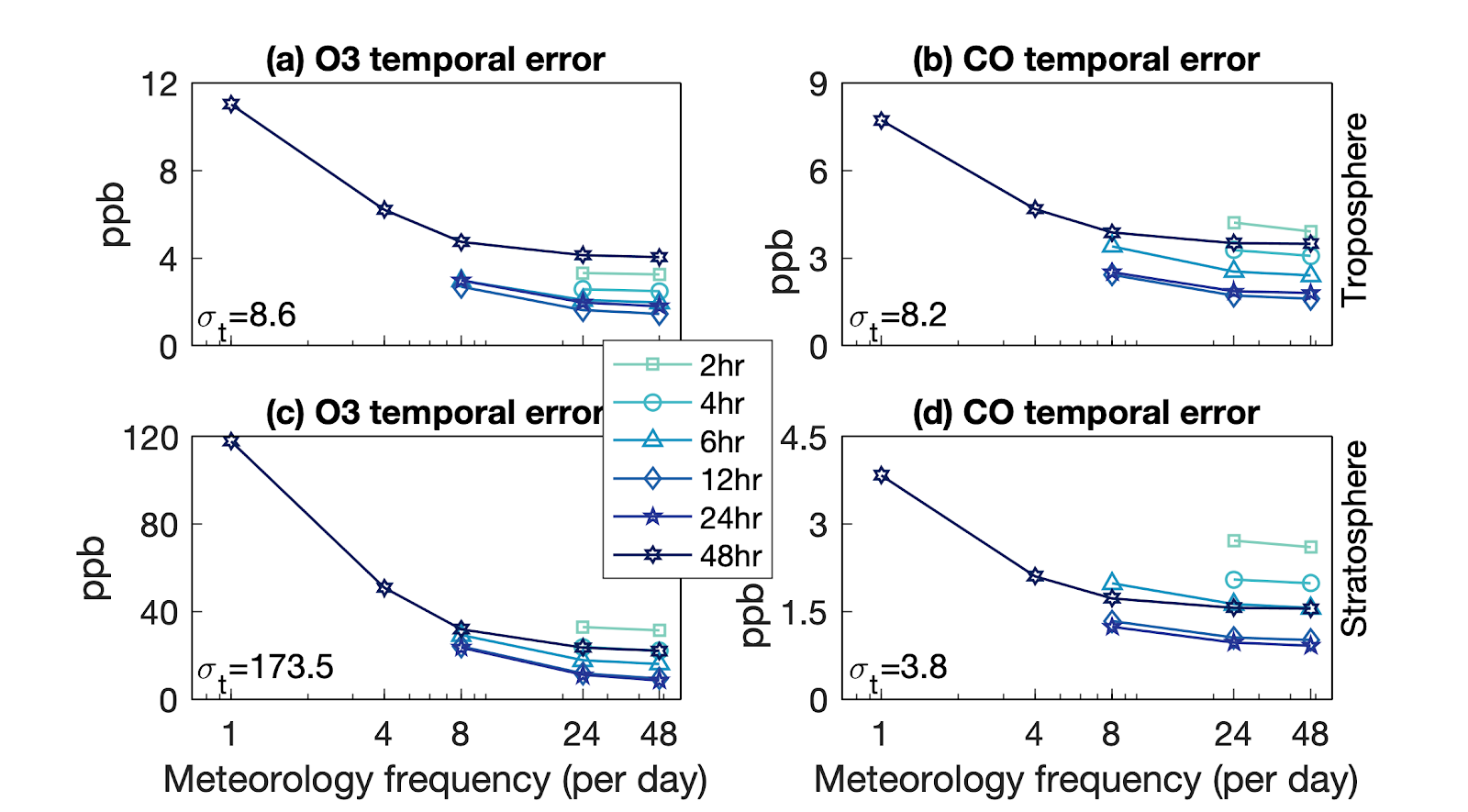Quantifying errors in specified dynamics schemes
Specified dynamics schemes are a ubiquitous tool for isolating the role of atmospheric transport on chemical weather and climate. They typically “nudge” the winds and temperatures in a chemistry-climate model to some reference meteorology, which is almost always a reanalysis product. However, several recent studies have come to opposing conclusions over the role of the transport in driving recent decadal variability in lower stratospheric ozone. Some early follow-up work shows that the zonal mean aspect of temperature nudging can introduce substantial errors in stratospheric circulation trends and - somewhat surprisingly - even temperature trends, themselves.

The usefulness and credibility of these schemes is in jeopardy if they do not effectively constrain variability and trends in transport. ACOM researchers have recently finished an extensive project in which they varied the specified dynamics scheme meteorology frequency (how often the reference meteorology is updated) and nudging timescale (how hard the meteorology is nudged) in the new 110-level version of WACCM6. These were “perfect” tests, in which WACCM6 was nudged to its own output. This eliminates any ambiguity so that all errors in circulation and transport can be directly attributed to the nudging scheme.
Variations in both of these parameters can induce mean biases and substantial errors in the variability of convection, the circulation, and in tracers like ozone and carbon monoxide. The circulation integrates tracer errors and accumulates them at the end of major transport pathways, leading to especially large errors in the upper-troposphere/lower-stratosphere and in the polar stratosphere. While errors in the circulation asymptote toward zero when the nudging parameters are carefully selected, tracer errors generally do not. We believe that developing a more sophisticated nudging scheme that is convection-aware and able to adjust its parameters on the fly could lead to further reductions in tracer error.
References
Davis, N. A., Davis, S. M., Portmann, R. W., Ray, E., Rosenlof, K. H., and Yu, P., A comprehensive assessment of tropical stratospheric upwelling in the specified dynamics Community Earth System Model 1.2.2 - Whole Atmosphere Community Climate Model (CESM (WACCM)), Geosci. Model Dev., 13, 717-734, https://doi.org/10.5194/gmd-13-717-2020, 2020.
Davis, N. A., Callaghan, P., Kinnison, D., Simpson, I. R., and Tilmes, S. S., The impact of specified dynamics schemes on wave-mean flow dynamics, convection, and chemical transport in CESM2 (WACCM6), Atmos. Chem. Phys., to be submitted.
Orbe, C., Plummer, D. A., Waugh, D. W., Yang, H., Jöckel, P., Kinnison, D. E., Josse, B., Marecal, V., Deushi, M., Abraham, N. L., Archibald, A. T., Chipperfield, M. P., Dhomse, S., Feng, W., and Bekki, S.: Description and Evaluation of the specified-dynamics experiment in the Chemistry-Climate Model Initiative , Atmos. Chem. Phys., 20, 3809–3840, https://doi.org/10.5194/acp-20-3809-2020, 2020.